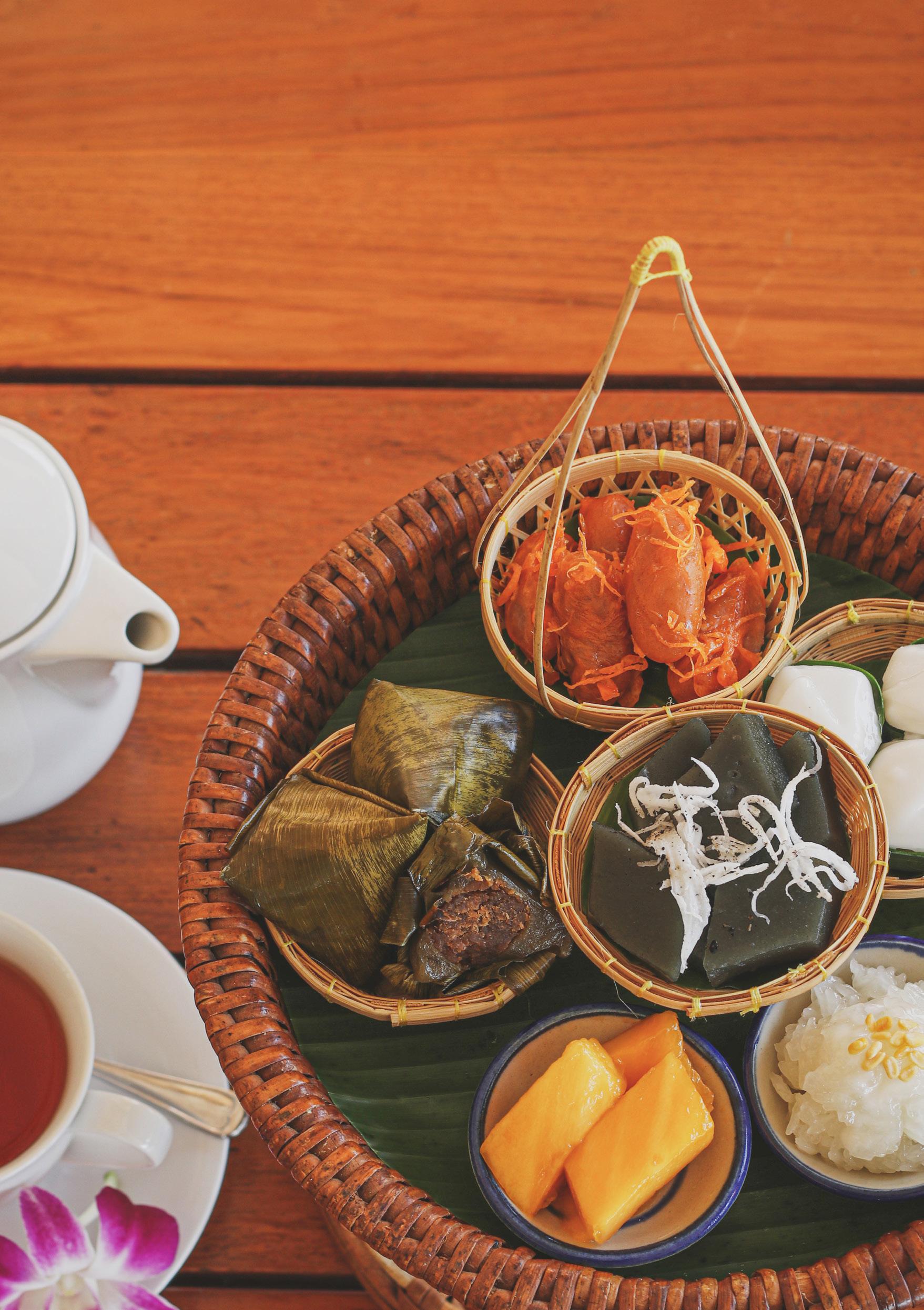
14 minute read
The Sweetness of Hua Hin
Five scrumptious Thai desserts made by legendary local artisans
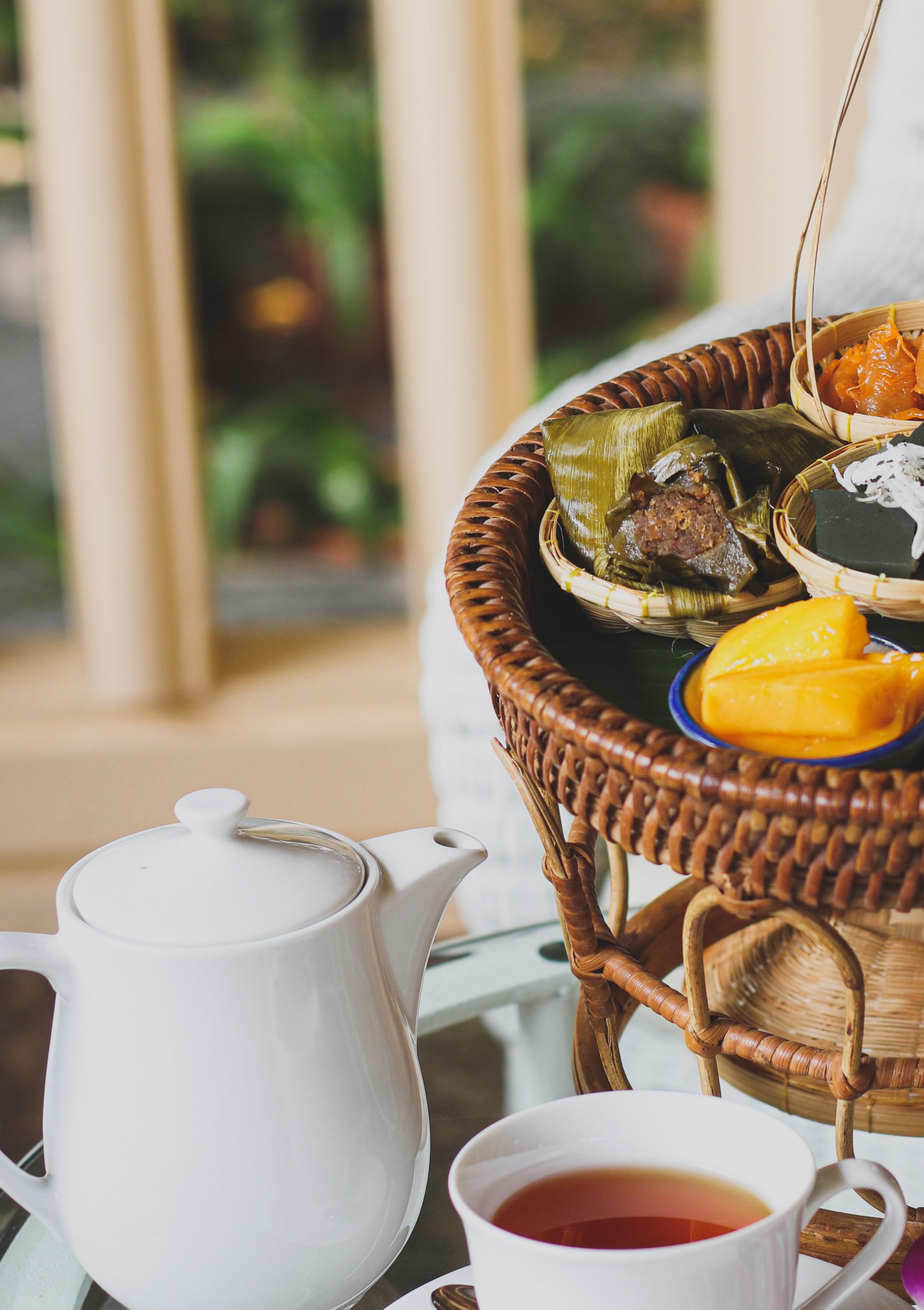
Advertisement
How to order
Taking home an authentic taste of Hua Hin has never been easier. Enjoy the luxury of more free time while we visit local artisanal dessert makers to bring back your favourite Thai treats.
Simply place your order the day before check-out (dial 0 for Dusit Gourmet), and we will deliver your selection to you on the morning of your departure. You can also find a range of legendary local desserts available at Dusit Gourmet.
Logistics and Handling fee
- No mark-up price; the hotel will be charged for the actual order plus the handling fee
- Minimum charge for handling fee is THB 100.- per order OR 10% of the actual order (whichever is greater). The fee covers logistics and packaging.
- Orders placed before 16:00 will be delivered before noon the following day.
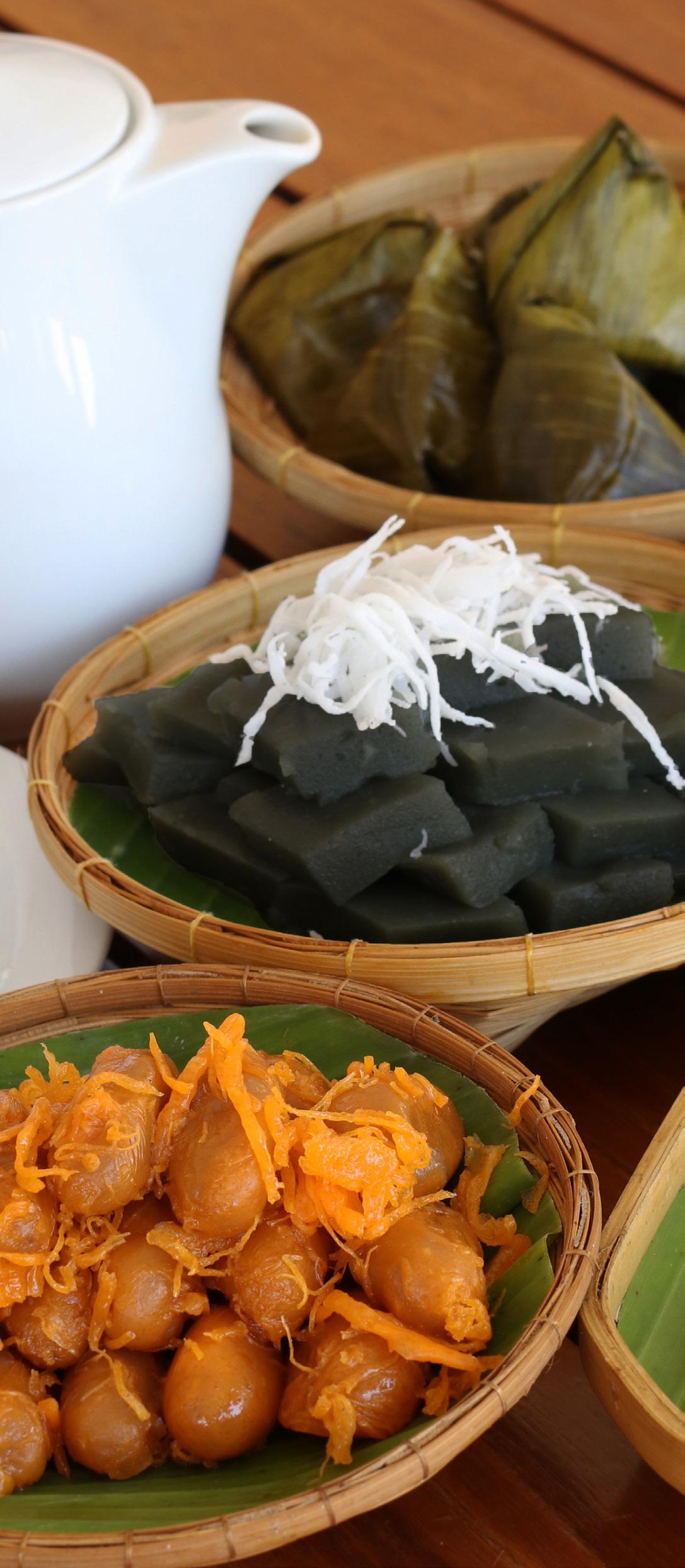
The Sweet Heritage of Hua Hin
Hua Hin’s history as a popular resort town and preferred vacation retreat for Thai royalty and nobility can be traced back to the reign of King Vajiravudh (King Rama VI) and the opening of Hua Hin Railway Station, more than 100 years ago, in 1910.
Bangkok’s upper classes, happy to have convenient access to the beach, began flocking to the town in droves, and their discerning needs and tastes did not go unnoticed by local entrepreneurs, who started hawking handcrafted trinkets, fresh seafood, and fine local desserts to these well-heeled visitors.
The variety and quality of the hawkers’ offerings only improved with time, and as the tourism industry matured, so too did Hua Hin’s shopping and dining scene. Seafood hawkers opened celebrated restaurants, and dessert hawkers opened their own legendary sweet shops. Family recipes were honed to perfection to meet the exacting tastes of both Thai and international travellers, and Hua Hin, once a sleepy fishing village, became the internationally renowned hub of rest and recreation – and deliciously sweet treats – as we know it today.
Here, we are delighted to present you with a taste of Hua Hin’s sweet local heritage and introduce you to four artisanal dessert makers whose legacy and expertise shines through in each of their scrumptious creations.
As you discover their fascinating stories – and ponder what to order – get ready to experience love at first bite.

Khao Neow Ma Muang (Sticky Rice with Mango) | Pa Jua
The sweet taste of an endless summer
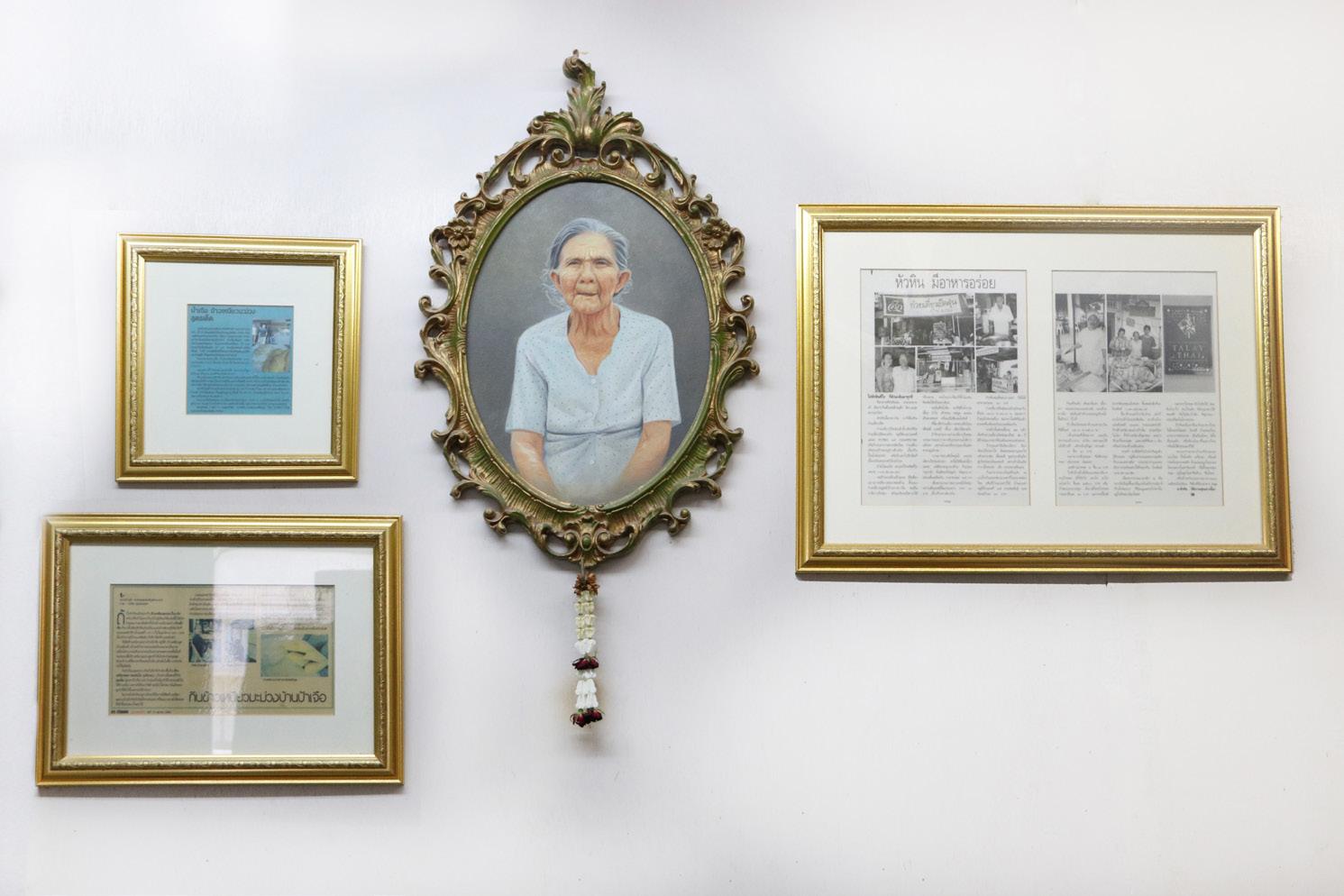

– that’s the culinary secret of Wanwisa Chaisriset – known locally as Pa Tim (Aunty Tim) – the tenth child of the late and great Jua Kerdsawang, ‘Pa Jua,’ who opened her eponymous sweet shop some 48 years ago.
Aunty Jua first became renowned for her sweet and aromatic servings of sticky rice with Ok Rong mangoes, which she created for many years when the fruit was in season, during the months of March to May. But her reputation as being a fine purveyor of this fragrant fruity dessert really took hold when she also started sourcing Nam Dok Mai, or Barracuda mangoes, which grow yearround, allowing her to create her sweet treats throughout the year too.
With mouth-watering servings of sticky rice and mango always available, Aunty Jua and her children soon developed their shop into one of the most popular sweet shops on Naret Damri Road. The introduction of Thai custard, dried fish and caramelized shredded coconut during the festive periods have only added to the store’s appeal.
Although Aunty Jua is gone, her children are proud to carry on her legacy. Aunty Tim – Aunty Jua’s second-youngest child – is now in charge, and she fully embraces her mother’s vision to use only the finest quality ingredients in her creations. This includes the best glutinous rice from Chiang Rai, the freshest local coconut milk, and the ripest Nam Dok Mai or premium Ok Rong mangoes that meet her exacting standards.
Her well-honed cooking methods are evident in the perfectly steamed and sweet sticky rice, wonderfully rich and creamy coconut sauce, and fried and crispy mung bean topping. Her mango peeling skill also ensures you will always get impressively large pieces of fruit that deliciously melt in the mouth.
“Everything is made fresh daily, and we never use less than perfect ingredients,” said Aunty Tim. “The most important thing for us is honesty; we’d rather send bad mangoes for composting, rather than serving something poor.”
For maximum freshness and taste, Aunty Tim uses no preservatives in her sweets. While mango and sticky rice is best consumed within the same day, it can be kept for up to two days at room temperature (only the coconut sauce needs to be kept in the refrigerator).
We hope you enjoy indulging in this luscious and moreish taste of Hua Hin.
Sticky Rice with Mango 120 baht Sticky Rice 220 baht / kg.
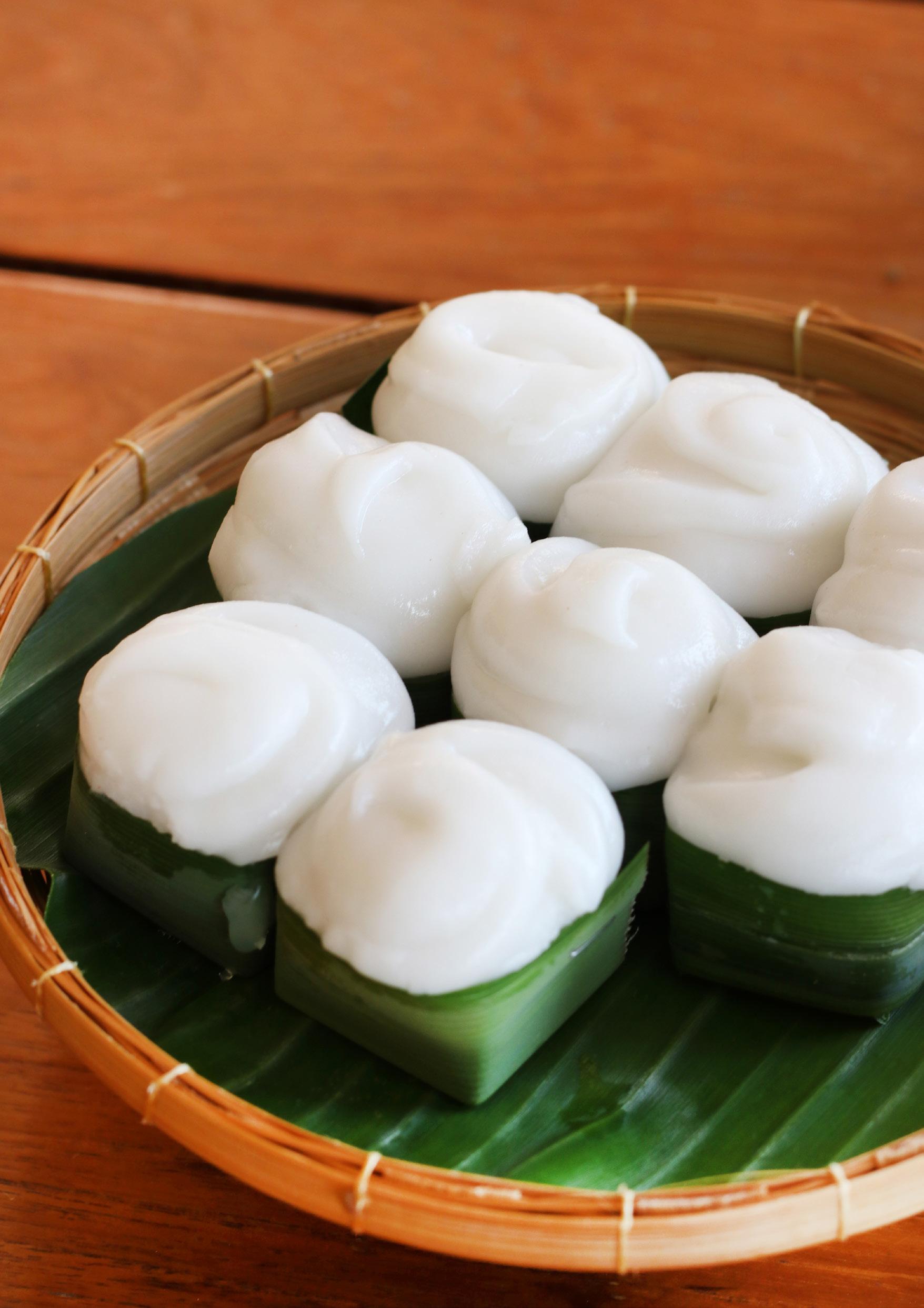
Ta Ko (Water Chestnut Pudding With Coconut Topping) | Benjapong
A hearty traditional dessert made by two talented sisters

“Thrifty cooking is not in our dictionary,”
said Jariya Benjapong, or Aunty Ya, while nimbly folding pandan leaves into mini boxes. Her sister, Nari Benjapong, or Aunty Pueak, nodded in agreement.
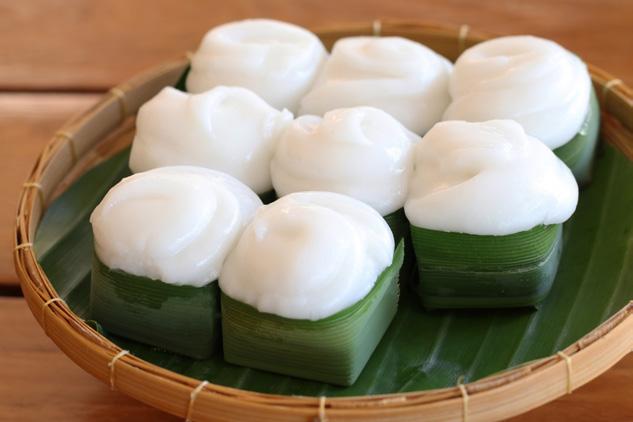
For more than 40 years, the dessert-loving duo has been known for offering generous servings of Khanom Ta Ko, and making extraordinary puddings for customers of all ages.
Their famous shop, Benjapong, occupies the premises which once housed the office of Thai Hua Hin Company, their family-run business which sold boat maintenance supplies, Nipa palm thatches, and general supplies to fishermen and tradespeople in Hua Hin.
The sisters’ tasty journey began when Aunty Ya got the chance to learn cooking from a district teacher. Upon discovering the recipe for Ta Ko, the elder Benjapong sister decided to hone her skills and develop her own signature version of this much-loved, savoury and sweet dessert.
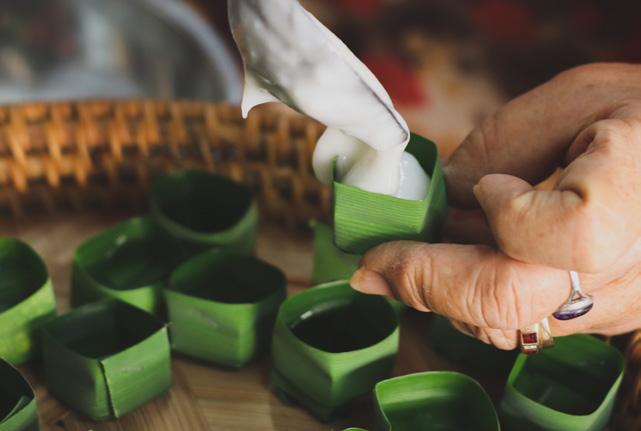
She bought mung bean flour from Bangkok, her father helped source pandan leaves from the neighbourhood, and with much trial and error, she refined her recipe to delicious effect. Together with her mother, she sold her sweets in the market for only 80 satang (0.80 Baht) per piece, and people couldn’t get enough of them.
In her golden years, Aunty Ya closed the family company and turned the office into a souvenir and Ta Ko dessert shop. Aunty Pueak joined as a helping hand, and business continued to blossom. The two senior sisters now make hundreds of boxes of Ta Ko daily, not in the pursuit of profit, but simply to keep themselves happy, active and young at heart.
Dedicated to their craft, they pour their heart and soul into making their divine puddings. This includes selecting premium ingredients and setting aside each evening to make a flavourful base mix of pandan water, flour, sugar, and blended water chestnuts. The mix is heated and stirred until thick, and then placed into pandan boxes before being left to cool overnight. In the morning, the sisters then finish the dessert by pouring a rich and viscous coconut cream on top of the first layer.
So good is their dessert that it became a firm favourite of the local palace during the reign of King Bhumibol the Great. When His Majesty came to stay in Hua Hin, the royal kitchen would invariably place an order for Ta Ko from the Benjapong sisters.
“Nowadays, we have lots of young customers, and many of them visit us every year,” said Aunty Pueak. “Some bring with them pandan leaves, which we use to wrap the desserts; and many of our customers order the desserts to take home. One recent customer told us that we should never stop cooking. He said that he’s tried a lot of Ta Ko, but he loves ours the most. Comments like this are what keep us going.”
Benjapong’s Ta Ko can be kept for two days. For maximum refreshment and enjoyment, they are best stored in the refrigerator before eating.
Let this cool and creamy dessert find its way to your heart through your stomach.
Ta Ko 60 baht / 16 pieces
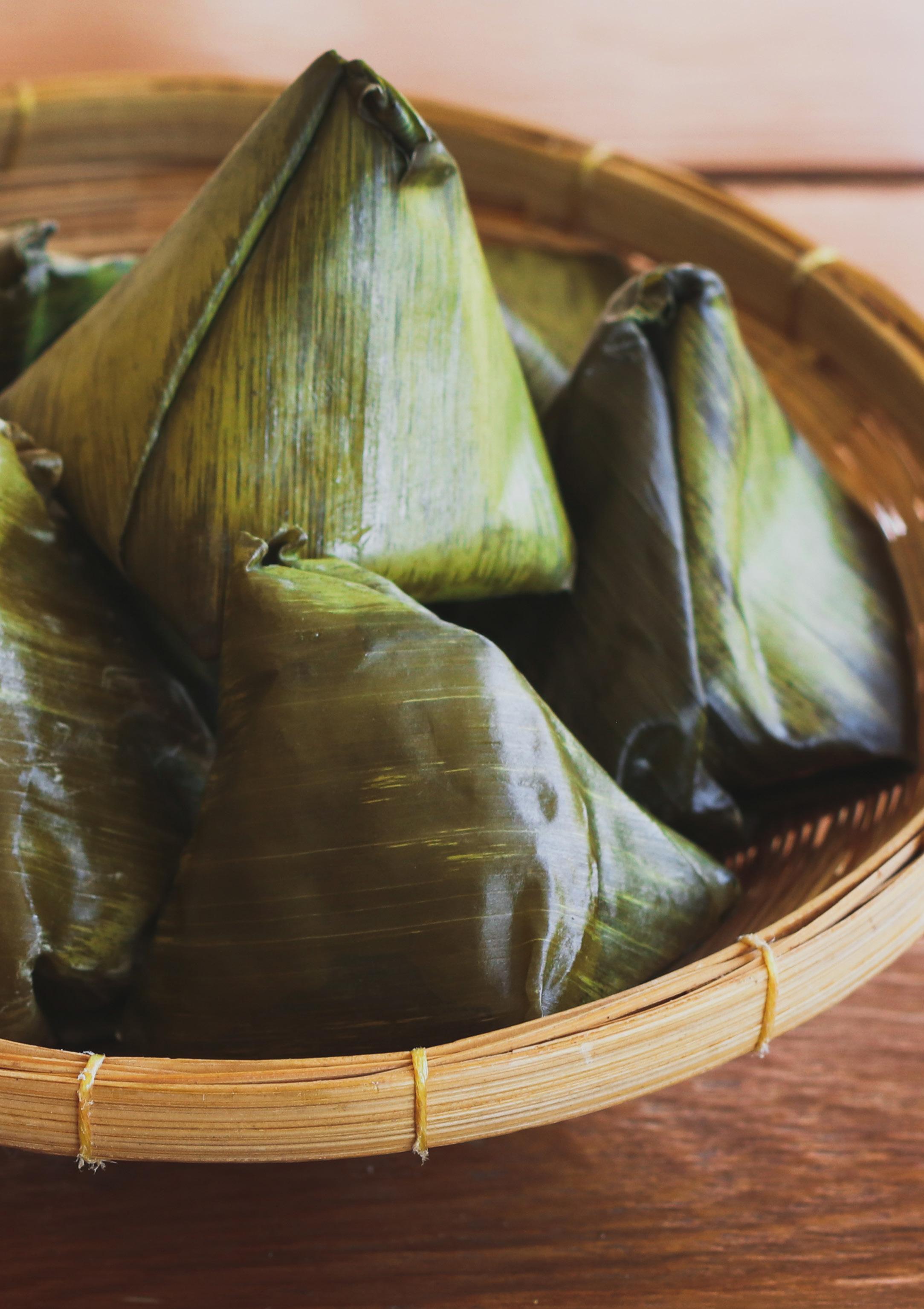
Khanom Tian (Salted Stuffed Dough Pyramid) | Meechai Mae Nongnuch
Small in size, but big in flavour
Another Hua Hin dessert that the royal kitchen department regularly selects to serve at the summer palace is Khanom Tian from renowned local shop Meechai Mae Nongnuch.
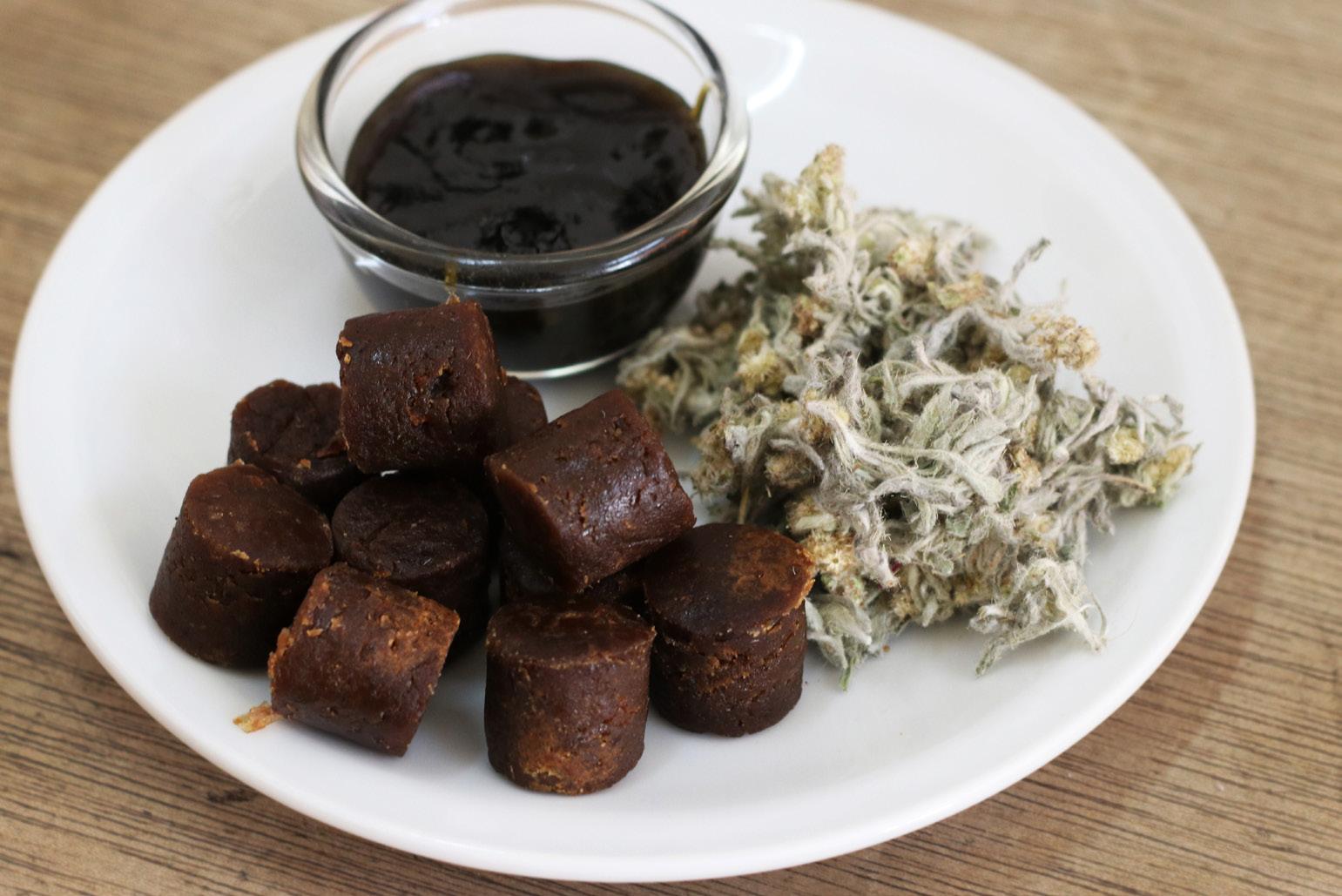
Always in high demand, the shop makes thousands of stuffed dough pyramids daily – and it’s especially busy during festive celebrations such as Chinese New Year and the Ghost Festival, when it also offers special creations such as sweet or caramelized shredded coconut stuffed dough pyramids.
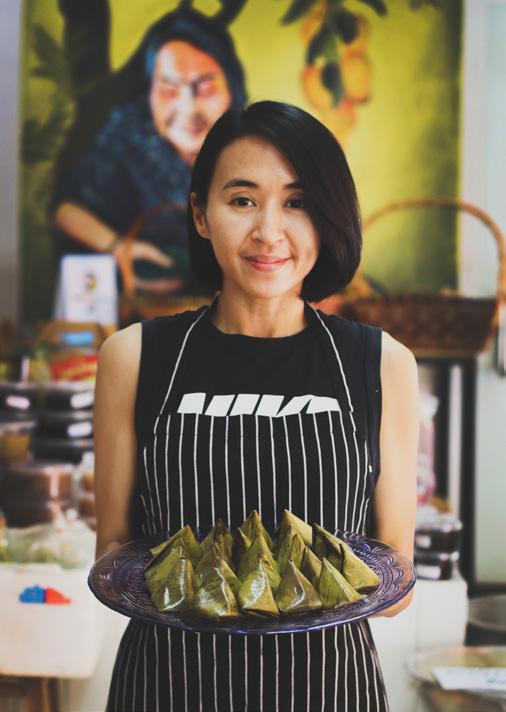
Atchariya ‘Dear’ Silapasunthorn, the current owner, told us that her family used to run a hotel made of wood, called Meechai. Her grandmother, Mae Nongnuch Silapasunthorn – a diligent businesswoman and a passionate cook – saw an empty space in the hotel lobby as the perfect opportunity to sell local sweets. She started by offering sticky rice with mango during the hot season, and later added other appetizing choices.
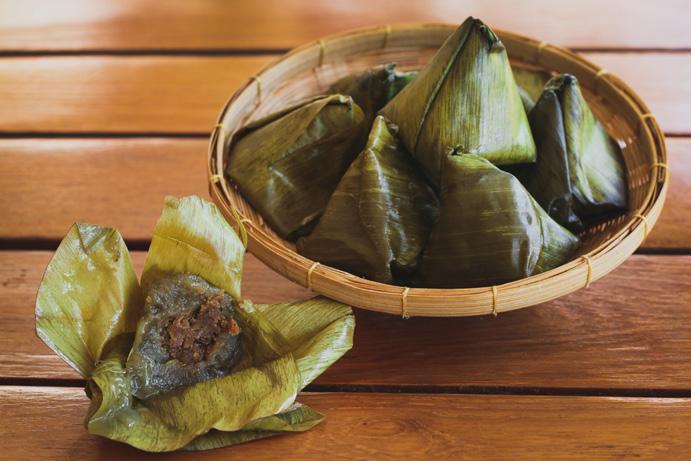
When the wooden structure that housed the hotel began to decay, the Silapasunthorn family decided to close the business and build a shophouse instead. That was 40 years ago, and they have been selling their lauded desserts ever since. This includes traditional mango and sticky rice, homemade preserved fruit desserts like baked banana and sundried banana, and the supremely popular Khanom Tian – all made following Granny Nongnuch’s famously delicious recipes.
A key ingredient of their flavour-packed pyramids is affine cudweed, an Asian herb which adds to the dough’s pleasant chewy texture and infuses it with wonderfully aromatic tastes. While the plant is becoming increasingly expensive and difficult to find, the family always goes to great lengths to obtain it and blend it with other premium ingredients to maintain the high standards for which Granny Nongnuch’s signature recipe is known.

Khanom Tian takes four hours to make. Meechai Mae Nongnuch’s cooks start at 5am each morning by carefully mixing and frying mung bean paste, onions, and peppers. This mix is then wrapped with soft dough, folded within banana leaves, shaped to resemble a pyramid, and finally steamed to perfection.
“The recipe is very complicated, but we still use the old method to serve our customers, many of whom are granny’s loyal fans,” said Ms Dear. “Due to the high demand, we now just need to be able to make Khanom Tian faster, and make a lot more, especially during the festive seasons so people can prepare their ritualistic food offerings.”
Khanom Tian can be kept for two-tothree days at room temperature, for up to a week in the refrigerator, and for several months in a freezer.
As for eating it, well, we recommend enjoying it all in one bite so you can experience all the mouthwatering flavours at once. Delicious!
Khanom Tian 9 baht / piece
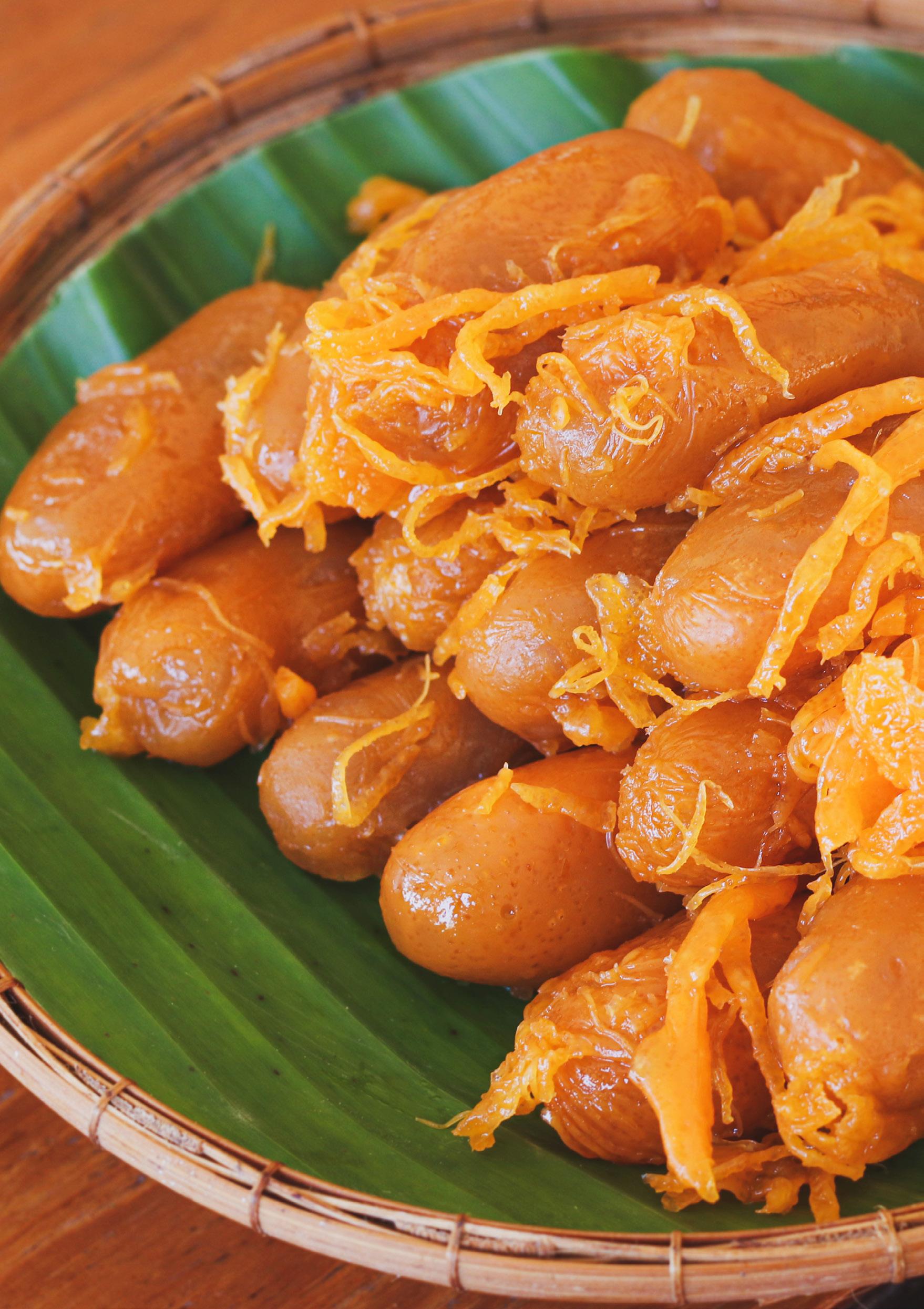
Med Khanoon Pueak (Thai Taro Marzipan) | Mae Keb Khanomthai
Decadently delicious golden sweets
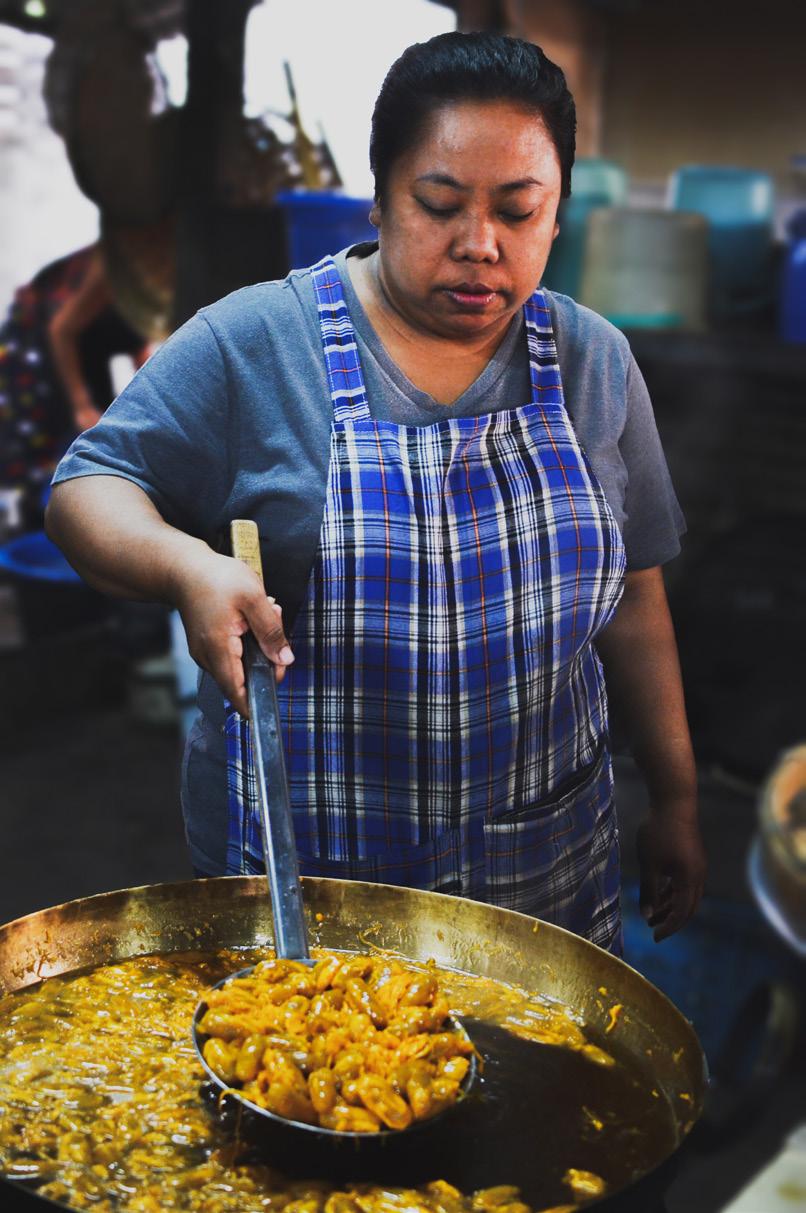
Taking their name from jackfruit seeds, whose shape they resemble, Med Khanoon are typically made using mung bean paste and are renowned for being glossy and super syrupy. Not so at Mae Keb Khanomthai, which makes its best-selling marzipans from pueak (taro purée) for a more subtle and incredibly moreish traditional dessert experience.
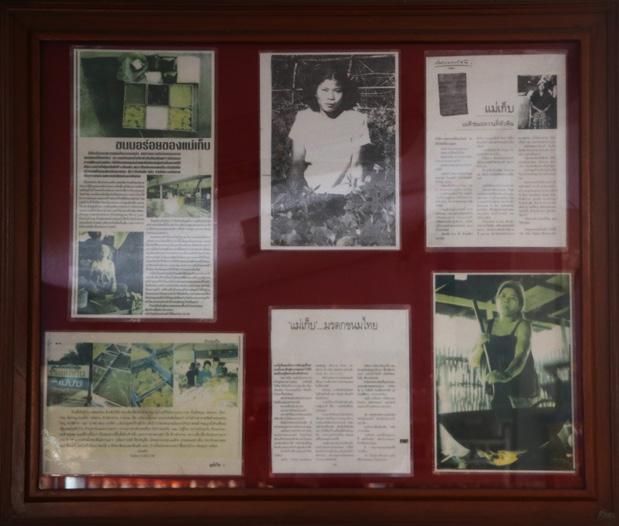
Mae Keb Khanomthai sells several desserts using ingredients from Phetchaburi province. The shop was founded by Mae Keb, or Granny Keb, who was taught how to make desserts as a youngster by her aunt. Initially, Mae Keb operated as a street vendor, and she would sell her sweet creations to upper-class villas in Hua Hin. Rising demand for her quality desserts saw her go on to open her own shop, and she ran this for 20 years before retiring and leaving the business in the loving care and capable hands of her daughter.
Today, Granny Keb, 94, serves as executive consultant of the family business while her granddaughter, Pinita ‘Dam’ Charoensook, manages and operates the sweet shop. Ms Dam was taught first-hand by her grandma and her aunt to become a master of Phetchaburian desserts, and she continues to tweak the recipes in line with modern tastes to ensure the flavours are memorably sweet but never cloying.
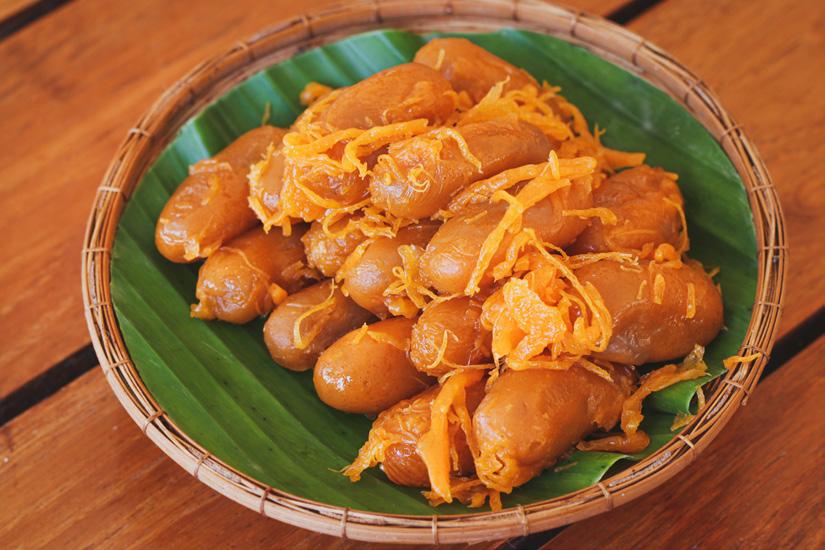
A genuine family affair, Granny Keb’s children and grandchildren make Med Khanoon Pueak fresh daily. Every morning they start by cooking mashed taro over firewood to infuse the paste with a divine smoky scent. Then they shape the paste into oval balls, dip them in a bowl of duck egg yolks, cook them quickly in boiling jaggery syrup, and then let them cool before serving.
Unlike other Med Khanoon, Mae Keb’s golden sweets are neither glossy nor sickly sweet because they don’t boil them too long in the syrup. In fact, these luscious treats are so popular, they run out every afternoon.
Alongside taro marzipans, traditional mung bean marzipans are available too – but we suggest opting for the signature option for a new taste experience.
Med Khanoon Pueak can be kept for two days at room temperature, and for up to a week in the refrigerator. They taste so good though, keeping them that long without eating them will be a challenge.
Med Khanoon Pueak 60 baht
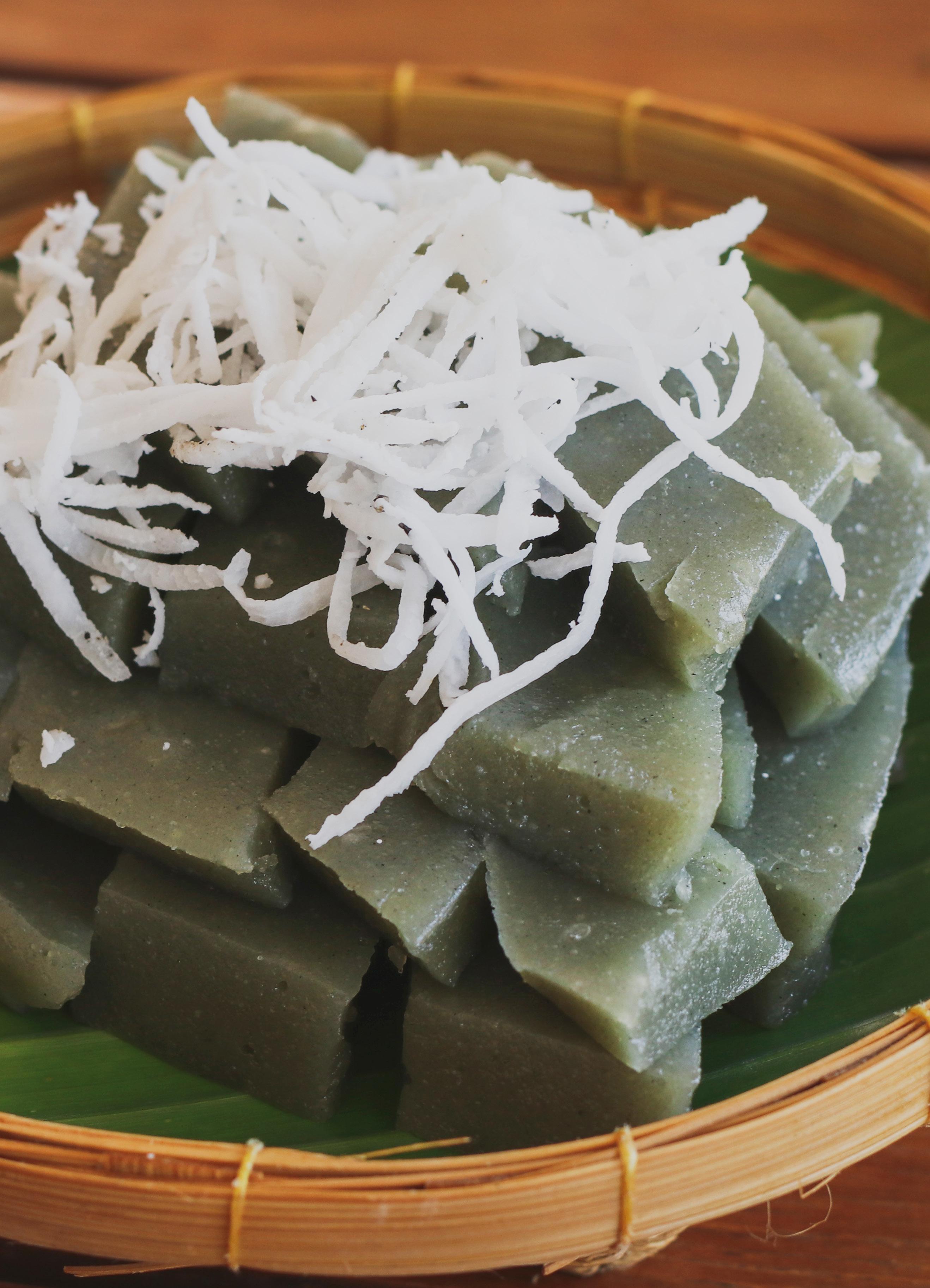
Kanom Piak Poon (Black Coconut Sweet Pudding) | Mae Keb Khanomthai
A weekend treat too good to be missed

The sweetest days of the week at Mae Keb Khanomthai are always the weekend, when Pinita ‘Dam’ Charoensook fires up the pots at 4 am to prepare her must-try creation – the pitch-black Kanom Piak Poon.
These days, traditional Kanom Piak Poon are hard to find, and many shops cut corners by using black food colouring instead of carrying out the intricate and complicated cooking process that the finest examples of this dessert require.
At Mae Keb Khanomthai, Ms Dam lovingly follows the traditional recipe passed down from her grandmother and makes this jelly-like pudding the good old-fashioned way. This includes burning coconut coir to create a black, aromatic powder, and then mixing this with water, flour and jaggery syrup to create a wonderfully sticky, smoky and sweet gloop.
After being left to cool in a tray, the jet-black, glutinous pudding is cut into squares and sprinkled with the sweet flesh of freshly shredded coconuts from Thap Sakae District. It’s a masterpiece of taste, texture, and aroma – smoky, sweet, and melt-in-the-mouth deliciousness.
Other hard-to-find weekend desserts available include Ta Ko Sorn Roop (Rice ball pudding with coconut topping), Khao Farng Kuan (Thai millet marzipan), Khao Neow Tad (Thai sweet sticky rice cake), and Khanom Mo Kaeng (Thai custard cake) with taro filling or fried shallots topping. Like Kanom Piak Poon, all are made the traditional way using the finest, freshest ingredients available, and cooked over wood and charcoal for maximum flavour.
The tastes of Mae Keb Khanomthai are the flavours of Thai childhood and memorable holidays by the beach. We hope you enjoy them as much as we do!
Kanom Piak Poon 50 baht
If you want to try these scrumptious desserts or take a sweet taste of Hua Hin back home, just dial 0 for Dusit Gourmet


1349 Phet Kasem Rd, Cha-am, Cha-am District, Phetchaburi 76120

